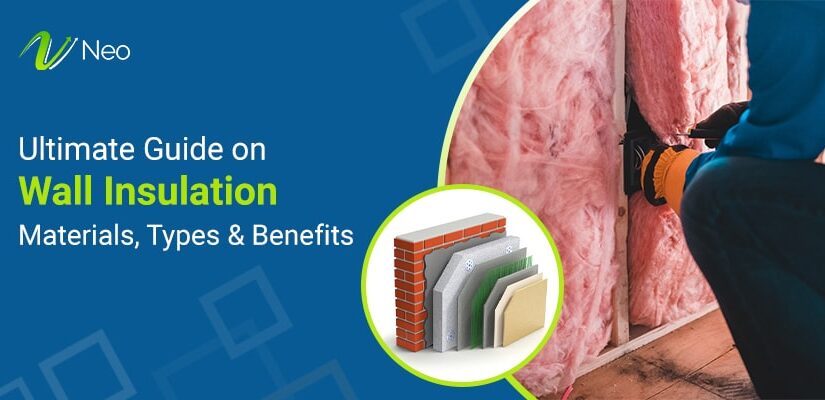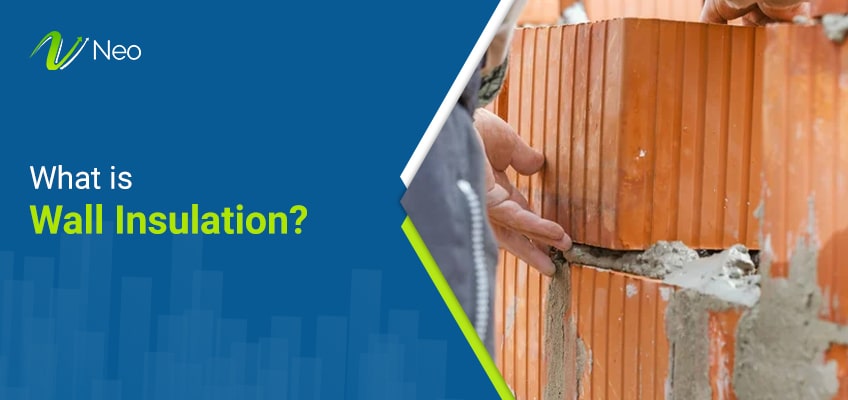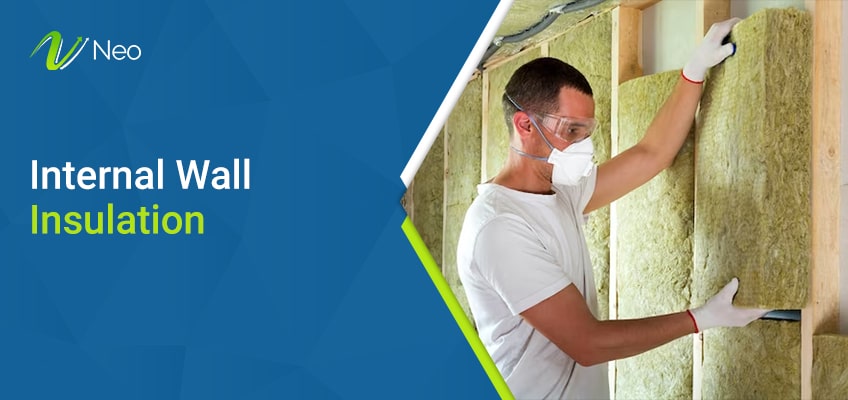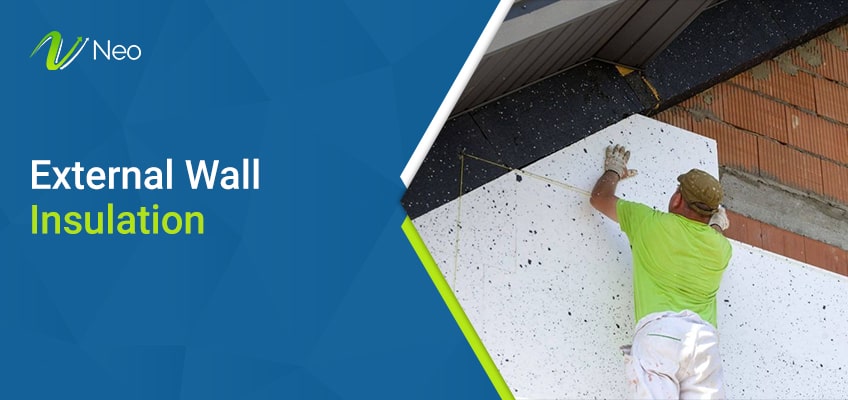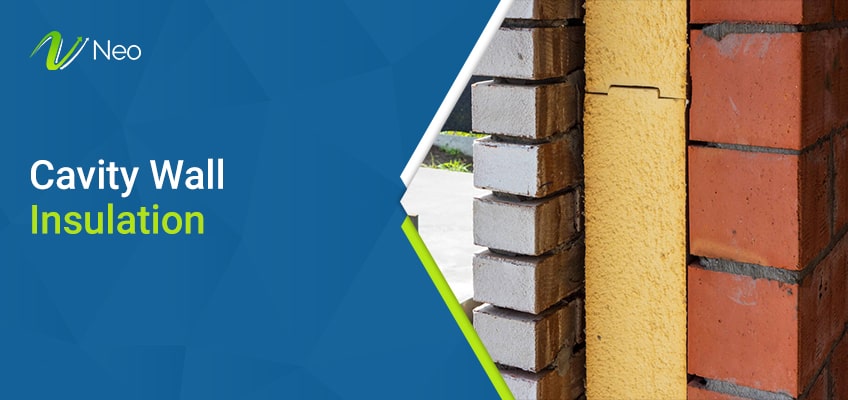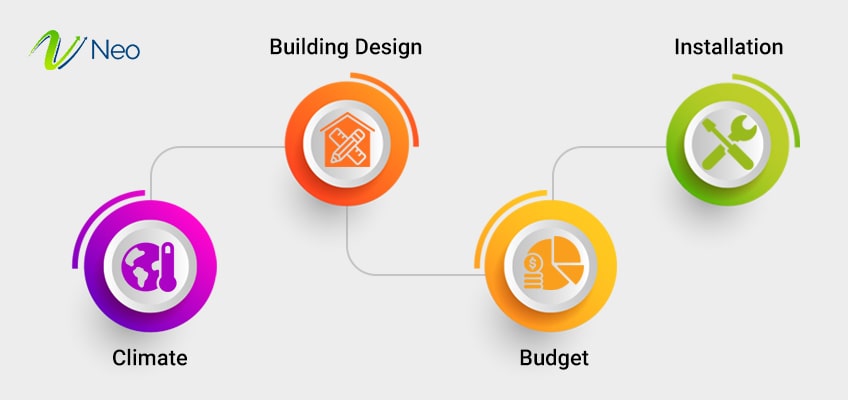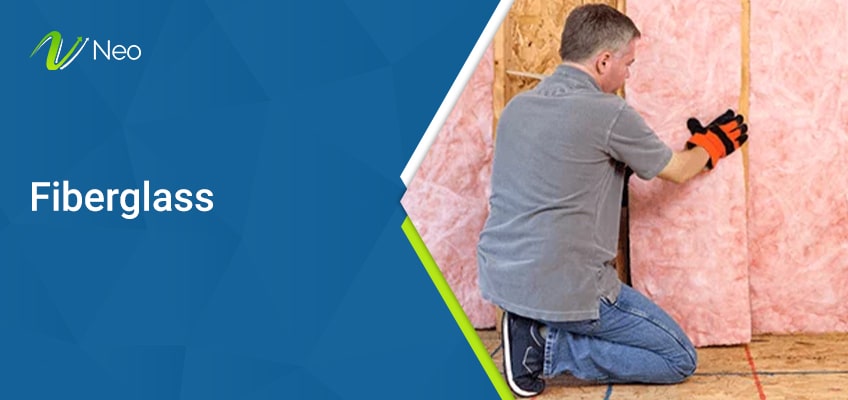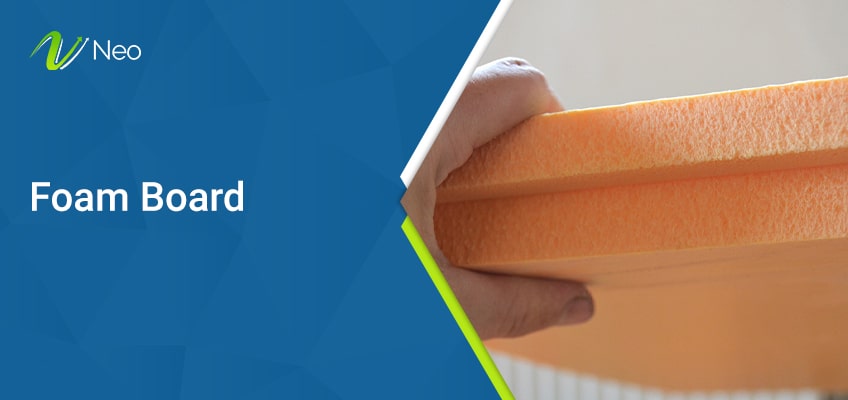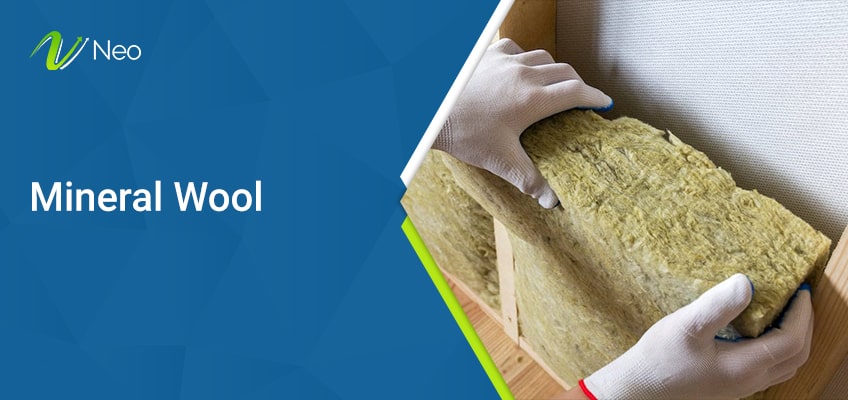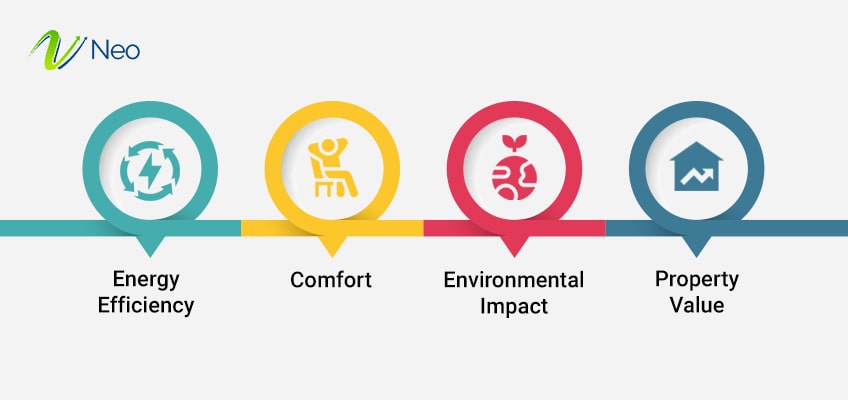Wall insulation entails a lot of details that need to be understood for energy-efficient and comfortable living spaces. Insulated wall contributes to the management of temperatures, save power use, and create an effective home.
Numerous materials can be used, starting from well-known ones like fibreglass or cellulose and ending with modern alternatives like foam board or mineral wool which is discussed in this blog. This guide will take into consideration the climatic impacts of different wall insulating systems ranging from interior wall insulations to external insulations. These impacts should come in line with available space for installation and finally cost implications.
In addition, we will reveal different advantages of wall insulation such as increasing energy efficiency and comfort, which, finally, boost property value.
What is Wall Insulation?
Wall insulation also entails attaching a substance to the wall so that the flow of heat is restricted. This contributes to controlling an appropriate ambient temperature indoors, enhancing power conservation, and developing energy-conserved settings for residence or occupation.
This includes wall insulation panels, a key element in whole building insulation whose main goal is to establish an obstacle between the internal and the outside environment, with the ultimate result of controlling temperature flow and cutting down bills for energy.
Why is Wall Insulation so Important?
Wall insulation increases thermal and acoustic insulation which translates into high-efficiency affordable utility bills and an optimal living environment. Heat Insulation also comes in and goes out through walls as one of the key areas of the room that have a huge role.
Make Your Home Cozy and Energy Savings With Wall Insulation!
Good insulation allows to maintain a constant indoor temperature and thus, there is no need to heat up or cool off too much. Through this, there is less energy consumption and a reduction of greenhouse gases with positive effects on the environment.
Types of Wall Insulation
1. Internal Wall Insulation
The internal wall insulation method entails placing insulating materials in the walls through their interior surfaces. This is an appropriate alternative in case of architectural or planning limitations that make it impossible to apply external wall insulation. On the other hand, it may diminish the indoor living area by a small amount.
2. External Wall Insulation
An outer layer of insulation is applied on the external walls of the building in such a way as to help keep heat. It is mostly preferred since it does not interfere with the inside space and offers extra reinforcement to the building framework.
3. Cavity Wall Insulation
Insulating cavity is a process that entails filling up the gap between the two walls of a double–walled house with wall thermal insulation materials. It is popular nowadays as modern construction which has a big influence on minimizing the process of heat transfer.
Read Also: How Proper Home Insulation Can Save Your Bills & Energy?
Factors to Consider When Choosing Wall Insulation
One of the most important decisions that have to be made regarding a building concerns the choice of wall insulation which ensures energy efficiency, comfort, and long-term cost savings. Several important aspects should be taken into account when making a decision.
Climate:
Therefore, the basic factor considered when choosing wall insulation internal is the local climate. It is important to realize how much cold or heat dominates in the region. The main purpose of insulating in colder zones is to prevent warmth losses and requires using thicker and more effective materials for this goal.
On the contrary, in hotter areas, it is all about staying cool. In most cases, it results in choosing different wall insulation materials with dissimilar application methods due to diverse climate conditions requirements.
Building Design:
The architectural design and style of a building greatly influence the choice of insulation. Insulation in some cases may be better carried out internally than externally depending on the structures suitable for such. This method may be practical where it becomes difficult to provide external insulation, for example, on account of architectural restrictions or aesthetics.
However, the use of external wall insulation where a protective cover is placed onto the exterior of the building protects the internal décor but improves energy efficiency. The design may also affect cavity spaces for insulation, especially on old or uniquely constructed buildings.
Budget:
Any insulation project should take into account cost considerations. The worst-case scenario is usually preferable upfront though the cheapest. Still, it’s a matter of striking a balance between short-term cost and long-run energy savings.
While some wall insulation materials might be costly to purchase, they could prove more energy-efficient in the long run leading to significant cost savings throughout the lifespan of the structure. An extensive cost-benefit analysis must be carried out to establish the most affordable and practical insulation option for the unique requirement of this building.
Installation:
Practically, this also involves the ease of installation as a logistic issue. The type of insulation material will determine the specific installation method that will be applied. This implies both time and costs.
The complexities of a building structure, the presence of obstacles, and accessibility of the skilled laborers affect the choice of insulation. Therefore, it is necessary to evaluate if the setup conforms to the timeline and the financial limits of the project.
Types of Wall Insulation Materials
The selection of appropriate insulation material greatly contributes toward better energy efficiency as well as improved occupant comfort in any building. Most commonly used types of wall insulation materials and their properties.
1. Fibreglass
One of the most common and cheaper fibrous materials for installation is fibreglass, which is also quite effective in insulating properties. It comes as a roll or batt therefore, it is quite manageable to handle during installation. It comprises various types of fibreglass insulation which trap air to minimize heat exchange and work for different wall types. It is a cheap, flexible way that can be easily used in many construction projects.
2. Cellulose
Cellulose insulation can be produced using burnt fire-retardant recycled paper or cardboard. This offers good thermal properties and it’s typically eco-friendly. Blown-in cellulose insulation is a good material for retrofitting especially in old buildings that should be refurbished or upgraded, it fills gaps and cracks in cavity walls efficiently.
3. Foam Board
XPS and EPS are rigid foam boards that have a relatively high insulation value and flexibility. They are light, solid, and usable with different wall surfaces. Foamboard insulation offers a very good R-value thus making it suitable for residential or commercial purposes. It has high thermal insulating properties for its thickness and is thus particularly appropriate where there is a lack of space.
4. Mineral Wool
Rock wool and slag wool are examples of mineral wool, which is an effective fire-resistant insulation material with good thermo-acoustic properties. They are also known as natural or recycled minerals spun into fibers and then batts or blankets. Mineral wool is durable; has low absorption of water and cannot burn, which makes it suitable for instances that require high levels of fire safety.
Benefits of Wall Insulation
Using wall insulation has many benefits that go in the direction of energy saving, comfort, ecology, and high demand for real estate objects. Below are the benefits of wall insulation:
1. Energy Efficiency
Wall insulation cavity is one of the main contributors to energy efficiency. Insulation serves as a thermal barrier thereby decreasing the number of heating necessary in cold climates and the numerous coolings required in hot climates.
In turn, this reduces energy use by ensuring that indoor temperatures are kept at a moderate level, resulting in significant savings on utility expenses in the long run. Wall insulation is an intelligent investment that will not cost people any money while reducing dependence on energy sources.
2. Comfort
It is important to maintain a constant temperature indoors to ensure a pleasant lifestyle or workplace. It is one among several measures taken to reduce temperature fluctuation inside the rooms maintaining warmth during winter and coolness through summer.
One can feel the difference in the same type of rooms that are neighboring with outer walls. Hereby insulation prevents the influence of outside weather changes, which becomes much more comfy and cozy.
3. Environmental Impact
Although wall insulation focuses on personal houses and buildings, it also contributes to the general benefits of the environment. The lower energy consumption is also tied to lessened carbon emissions which contributes to a minimal carbon footprint.
As the world becomes aware of the climate change problems, there is a growing need for green insulation alternatives. The principles are in line with wall insulation hence it is environmentally responsible.
4. Property Value
Insulated properties have greater appeal than non-insulated properties in the real estate market. These homes create an environment that is energy efficient, comfortable, and ultimately has lower utility bills to potential buyers whom they attract. Therefore, it can be concluded that upgrading insulation will raise property values.
In addition, insulating the property ahead makes it more marketable which can translate into better-asking price upon selling.
Insulate Your Home With Wall Insulation Now!
Why Choose Neo Thermal Insulation for Wall Insulation?
For Wall Insulation India, It’s only one name Neo Thermal Insulation is a trustworthy brand that promises best-in-class quality and continuous innovation. In addition, their insulation materials products have to perform and last if used internally or externally. This is a Neo Thermal Insulation material that provides good thermal resistance, moisture resistance, and easy installation.
Conclusion
One important factor in building energy efficiency, comfort, and sustainability therefore relates to wall insulation. There are many types of different wall insulation materials and methods and what one would choose would depend on the country, type of building, its budget, and whether it was easy or not to install. However, the advantages of wall insulation go well beyond simple energy saving by increasing comfort, lowering CO2 emissions, and enhancing the worth of a residence.
Frequently Asked Questions
1. What is Wall Insulation?
Wall insulation is the addition of a material to the walls of a building that reduces heat transfer which increases energy savings and comfort.
2. What is a good insulating material for the wall?
Wall insulation may consist of such materials as cellulose, fibreglass, foam board, and mineral wool.
3. Which wall insulation is suitable for homes?
Factors that determine home wall insulation selection include climatic conditions, house design, and available funds. Some of the common options include fibreglass, cellulose, as well as foam boards.
4. Why is wall insulation important?
Some of the benefits that will accrue when walls are insulated include more efficient use of energy, better comfort, lesser damage to the environment, as well as increased property value.
5. Do you know why they put wall insulation?
Wall Insulation aims at preserving indoor temperature by creating warmth and avoiding frequent heating and cooling
